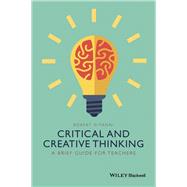- Explains why critical and creative thinking complement each other with clear examples
- Provides a practical toolkit of cognitive techniques for generating and evaluating ideas using both creative and critical thinking
- Enriches the discussion of creative and critical intersections with brief “inter-chapters” based on the thinking habits of Leonardo da Vinci
- Offers an overview of current trends in critical and creative thinking, with applications across a spectrum of disciplines








